The Development of Complexity in Prehistoric Northern China
Sarah M. Nelson
University of Denver
Far to the north of the Central Plain of China (the Zhongyuan), in Liaoning province and Inner Mongolia, nearly two millennia before the florescence of the Shang dynasty, a complex society known as the Hongshan culture arose, with a mixed economy of herding and agriculture. Some two dozen major sites are known, along with many smaller ones, spread over about 100,000 square kilometers (Fig. 1). Hongshan presents a puzzle for Chinese archaeologists because of its amalgam of non-Chinese traits (for example nude female figurines and the "Goddess Temple" featuring over-life-sized statues of women) with some early manifestations of such quintessentially Chinese characteristics as round and square outdoor platforms for altars, the use of jade for emblems of power, and possibly dragon iconography (Guo, in press).
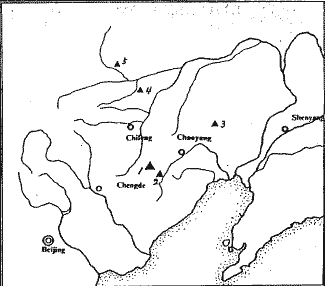
Fig. 1. Major sites of the Hongshan culture. 1. Niuheliang, 2. Dongshanzui, 3. Hutougou, 4. Ongiliud Banner, 5. Balin Right Banner. Map from Sun and Guo 1986.
For western archaeologists the puzzle is of a different kind - how to understand the creation of complexity in this unlikely time and place. The Hongshan fails to conform neatly to any present theory of the origin of complex society. A model of steady in situ evolution involving prior tribes and chiefdoms in the same location is not appropriate, for sites claimed as Hongshan antecedents are found some distance away, in the Chinese Dongbei to be sure, but several hundred kilometers to the east, and mostly either in the Manchurian plain or the Liaodong peninsula. A world system (Frank 1993) is unlikely, for the distances are too great for the transport available. Neither an interaction sphere (Caldwell 1964) nor peer polity interaction (Renfrew 1982) exactly describes the situation, because although there were other contemporaneous complex societies arising in China, and farther away in Central Asia states were also developing, evidence of interaction between Hongshan and these distant societies is sporadic and/or ephemeral. Inspired by Ruth Tringham's (1991) attempts to turn "faceless blobs" into people, and George Cowgill's (1993) distinguished lecture in which he suggested that we underconceptualize the past, I would like to offer two perspectives - a macro perspective which includes the wider region from Central Asia to the Korean peninsula, and a micro view that focuses on Hongshan itself. First, however, it is necessary to provide a thumbnail sketch of the Hongshan culture as it is now known.
The Hongshan Culture
The group of sites which comprise the Hongshan culture includes three kinds of sites: various ceremonial precincts; large, complex and rich burials; and villages. The first of the villages was discovered in 1908 (Torii 1938), and more were found in the 1920s (Andersson 1924) and 1930s (Hamada and Mizuno 1938), when most interest in these sites was focused on the black-on-red painted pottery. The pottery was considered important as evidence of diffusion from the Yangshao culture in the Hwang He valley, thus demonstrating the strength of the nuclear area in China by the reach of its influence. However, the discovery of the Hongshan ceremonial areas, which include nude female figurines and over-lifesize clay female statues, startlingly unChinese traits, made any simple notion of diffusion from the Zhongyuan impossible. The Hongshan culture now needed to be considered on its own merits, as a separate center of the creation of complex society. It is not seen, however, as unrelated to central China. Liaoning archaeologists argue that the iconography of Hongshan jades and round and square platform altars was handed down into the Shang dynasty.
An additional complicating factor in situating the Hongshan in a spatio-temporal framework is that several features of Hongshan demonstrate continuity with earlier sites in Liaoning province. For example, the majority of the pottery vessels is not painted, but follows the rocker-stamped beaker tradition which had flourished in Liaoning continuously at least since 6000 B.C. (Fig. 2). This pottery tradition covered a wide territory, from the Peiligang and Cishan cultures in Hebei province to the south of Hongshan and north to Jilin province, as well as being arguably related to the Chulmun culture on the western side of the Korean peninsula (Nelson 1990). Whether the inhabitants of these sites continued to be in touch with each other through the millennia is unknown, but it seems unlikely that they were entirely cut off from mutual contact. Exogamous village marriages and the search for non-local raw materials would have necessitated the continuous operation of loose networks.
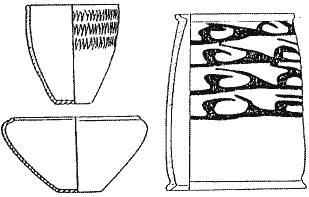
Fig. 2. Painted cylinder (right), rockerstamped open-mouth pots (left upper), and plain bowls (left lower) from the Hongshan culture. From Wenwu.
Furthermore, jade carving is found in all the Liaoning neolithic sites. At first the jade products were exclusively in the form of ornaments, but by the time of the Houwa site (around 5000 B.C.) carved stone objects are obviously emblematic, because they follow specific patterns and are pierced for hanging on a cord or attachment to clothing. There is arguably a continuity between the annular slit earrings of Chahai in 6000 BC through crude slit-ring jades at Zuojiashan in Jilin province in perhaps 4500 BC, to the annular pig dragon emblems of Hongshan (Fig. 3), thus suggesting continuity through time as well as over distance (Sun and Guo 1984). Increasing cultural complexity accompanied the refinement of jades, for example in differential dwelling sizes and increasing intensification of food production as demonstrated at the site of Xinle.
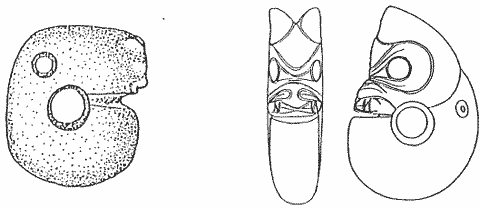
Fig. 3. Polished pendant from Zuojiashan, left, Hongshan pig-dragon, right.
These data, inadequate though they are to produce a full prehistory of the region, are sufficient to establish that it would be incorrect to think of this region at any time as consisting of isolated sites or even isolated "cultures," or groups of sites. While the precise mechanism that tied them together is unknown, and for the moment perhaps is beyond reach, it seems that some mechanism must have existed. Hongshan arose on the edge of a region that had been developing and growing for millennia, and probably contained dense networks of paths through the forests and across the rivers of Manchuria, connecting the known sites and others yet to be discovered.
Hongshan villages, in fact, are not strikingly different from earlier village sites in this region, which is the reason they were seen as unremarkable for so long. In the only area that has been systematically surveyed, village sites occur about every ten kilometers on either side of the Yingjin river. The sites contain evidence of the cultivation of millets and of pigs as important domesticates, as had been established in this region for some time. However, two innovations are important to note. A new tool in Hongshan sites provides an indication of agricultural intensification at this time - the si, or stone plow (Fig. 4). It is interesting to note that this type of tool was identified as a plow based on use marks, as early as 1927 (Nelson 1927: 192). Cattle bones may be an indication of traction animals. Furthermore, sheep bones appear, suggesting a mixed economy of herding and agriculture. It does not seem likely that sheep were locally domesticated, as wild sheep are not known in this area. However, Hongshan sites are on the edge of the Mongolian grasslands (Liaoning et al 1977). Given the presence of sheep, it seems likely that the Hongshan inhabitants were in touch with Mongolian or Central Asian sheep herders.
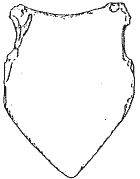
Fig. 4. Stone plow, Hongshan culture.
Few Hongshan houses have been excavated, but those which are known are square to rectangular, with sides ranging from four to 12 meters. Even the largest buildings have only one central hearth, but several different sets of tools and containers suggest multi-family dwellings to the excavators. Villages are located on hill slopes above rivers, usually in sites of only one to two meters in depth (Guo, in press).
Although the villages were unremarkable, the ceremonial precincts must have been impressive, as well as the large graves often found on hilltops. One large site is Niuheliang, which includes a pair of buildings known as the "Goddess Temple," beside an enormous platform edged with stones. In another location, a series of five huge stone structures are ranged in a row, in addition to several other areas with tombs (Fang and Liu 1984). A recently discovered earth pyramid, nine meters high and 40 meters in diameter, contains a layer of crucibles near the top.
The Goddess Temple is 25 m long and varies from two to nine meters in width. It is strangely shaped, with three lobes at one end and an asymmetrical extension at the other (Fig. 5). The few centimeters of footing that remain contain raised and painted designs in geometric patterns. Fragments of statues made of unbaked clay were found in the temple, including a life-sized female face with green jade eyes (Fig. 6), a fragment with shoulder and breast, a human ear three times life size, and a pig jaw (Sun and Guo 1986). The statues are thought to be female because of the breast fragments, but no whole statue has been found or reconstructed. Sherds of painted pottery cylinders were also found, and a fragment of an incense burner. An oval building is placed at one end of the "temple," and the large platform at the other end (Liaoning 1986).
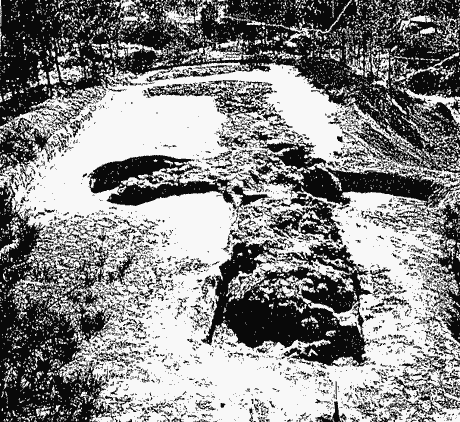
Fig. 5. The goddess temple (22 x 8 m.) at Niuheliang. From Sun and Guo 1986.
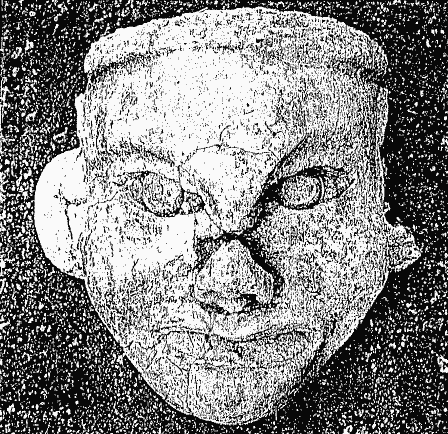
Fig. 6. The life-sized face of unbaked clay found in the goddess temple. The eyes are jade.
Dongshanzui is the site of another ceremonial center which featured both round and square platforms, with walls extending from them. Small nude female figurines were found at this site (Fig. 7), and fragments of medium sized sitting figures, but no large statues. Although a few everyday objects were found, they may relate to an earlier level of the site (Guo and Zhang 1984). As at Niuheliang, no permanent population is in evidence in the area excavated so far.
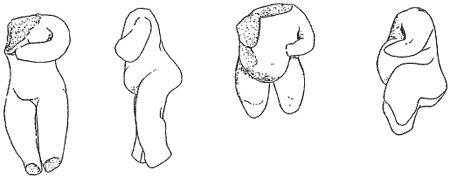
Fig. 7. Nude female figurines from Dongshanzui.
The burials demonstrate elites of at least two ranks. The highest ranking person in each burial occupied an elaborate stone slab coffin in the center, enclosed by a stone platform. Smaller burials range around the central burial, still under one mound. Between the central burial and the others are rows of painted cylinders. The subsidiary graves include both bundle burials and extended skeletons, containing up to six jade pieces (Fang and Wei 1986a, 1986b).
Although the village sites rarely contain jades, occasionally hilltop burials with jade emblems are found near the villages. The jades were made in specific patterns, such as flat turtles and birds with spread wings, the hoof- or cuff-shaped jades which may be hair-do holders, and three-dimensional "pig-dragons" - pig heads on smooth annular open rings (Sun 1984). These are thought to be emblems of rank.
No evidence of writing is found in the Hongshan culture, nor of warfare. However, both the jade manufacture and the making and firing of perhaps 10,000 cylindrical painted vessels (Guo, in press) suggest quite impressive craft organization. Intensive agriculture by a rather dispersed population is unusual, and could indicate the growing of grains for long distance trade, although there is no further evidence to support this inference. The jade itself is not local, and must have been acquired from afar, perhaps as a result of that trade. Other indications of contact with other peoples include the painted pottery, the presence of sheep and cattle, and perhaps the cairn tombs, which are the first mounded stone tombs in this region. Recently evidence of bronze use has begun to surface, in the form of molds and small copper fragments, including a copper wire earring. A layer of crucible fragments near the top of the earth pyramid suggests ritualized metal production.
Macro-theories
The presence of female figurines, copper, non-local jade, and painted pottery makes it appropriate to consider possible connections with Central Asia. Intensification of both craft production and agriculture suggest the possibility of trade. But the location of trade partners and the mechanism of trade are still a "black box".
A provocative paper by Frank (1993) proposes a "world system" as early as the Bronze Age. Cycles are identified which affected Asia, Africa and Europe as well as Central Asia, which appears to be the hub of the system. The beginning of these cycles is about 1700 BC, too late for the Hongshan culture. The possibility of a core and a periphery on a large enough scale to reach across Central Asia appears to be out of the question as early as 3500 B.C. On the other hand, long distance connections did exist, and perhaps the possibility of contacts should be entertained. Even down-the-line trade would have some consequences, but we do not know about the density of settlements, if there were any at all, in the vast grasslands. Thus the connections between Hongshan and Central Asia may have been direct. As much as Sinologists would like to see China as completely sui generis, and as much as processual archaeology has stressed that only in situ development is appropriate to study the processes of change, it seems undeniable that connections between north China and Central Asia had been established, and that they could have been more than tentative and ephemeral. The Namazga culture (Kohl 1981) is one possibility (Peng 1993). While it is inappropriate to propose a "world" system, since neither side could be easily designated as core or periphery, nor is there any evidence of dependency on either side, still, the manufacture of elite emblems out of non-local material must have made the Hongshan elite to some extent dependent on their jade sources, especially since the jades were buried with the dead and therefore regularly required replacement. Thus the level of interaction had been ratcheted up a notch since the preceding Xinle culture, which found its raw materials nearer to home.
The notions of peer polity interaction (Renfrew 1982) or cluster interaction (Price 1977) are tempting to apply, but they seem to require polities more closely packed into the landscape than those of China in the fourth to third millennium BC. An interaction sphere, in the sense that Caldwell (1964) meant for the Hopewell culture, does not require state-level polities, so perhaps this more amorphous designation is the most appropriate, as Chang (1986:243) has also suggested. But even an interaction sphere suggests regular and planned contact. Perhaps some new term is needed for tenuous relationships stretching across enormous distances. It is possible to hypothesize that exploratory parties from both sides met, the one looking for copper and the other jade, but only gradually established regular connections. The process of finding each other must have been stochastic, and the resulting ties easily broken. Fragile as a spider's web, they nevertheless existed, and need to be accounted for in our theories. They could be thought of as stochastic trade.
Micro-theories
When the region of the Hongshan sites becomes the focus, rather than the ceremonial centers, a different landscape emerges. The bulk of the population lived in small villages, produced more grain than was needed for the size of the population, and also herded both pigs and sheep to supply meat, leather or wool, bone for tool production, lard, and fertilizer for the fields. In the villages, ordinary pottery was produced along with stone and bone tools for everyday needs. Even in the villages, pottery manufacture may have required specialists, since multi-chambered kilns have been found which would have required specialized knowledge (Liaoning et al 1977).
In unknown locations, possibly in the ceremonial centers, specialized crafting took place. Jade working was carried out on a large scale, and huge numbers of painted bottomless vessels had to be produced for funeral use. While the evidence of copper and bronze may belong to the end of the Hongshan, this is an issue that is far from settled. Thus, at least three skilled industries of jade carving, fine pottery production, and copper or bronze smelting were important to maintain the system. At each end of the Goddess Temple there is a construction - an oval building on one end and a large platform on the other - which might have been the locations of some of these activities. Certainly the production of such a massive amount of painted cylinders -- an estimated 10,000 -- would have required a large workforce to obtain the clay, process the clay, shape the vessels, procure the materials for paints and manufacture them, and fire the vessels. Given the difficulties of transporting these large and fragile vessels, it seems very likely that they would have been produced near the graves into which they were placed. Some sherds found on the platform strengthen this inference, but the area has yet to be excavated.
The location of production next to the temple could have sanctified these activities as being in the service of the goddess, rather than as required by the elites. If more evidence of craft production, in the form of jade chips or pottery waste or metal slag, should be found in these locations, it would suggest that these industries were not only under the control of the elite, but also sacralized by taking place within the sacred precincts of the goddess. It is interesting to note that recent excavations have uncovered clay crucibles in a compact layer near the top of an earth pyramid, again suggesting the sacralizing of craft production.
Conclusion
The development of the Hongshan elite was based on both long distance connections and local production. Because Hongshan occupied an ecotone between the grasslands of Mongolia and the forests of Manchuria, the productive resources of both could be combined. The addition of sheep and cattle to the previous millet and pig economy allowed the Hongshan elite to expand, combining agriculture, herding, and long distance trade. The acquisition of high quality jade from distant places allowed the elite to supervise the creation of emblems of high status which were unavailable to the villagers and craftsmen. The mechanism by which the ordinary people were induced to participate in the elite system, producing crafts for the use of the elite and intensively farming the land with the effective but laborious stone plow, may have been an ideological system that mystified their labor into the service of the goddess. The elite, too, may have been perceived to be performing services for the goddess, rather than as exploiting part of the population for their own goals. By sacralizing the jade, pottery, and metal, the elites created a landscape of power that was centered on the Hongshan homelands, but also reached well beyond it into the sources of jade.
* This paper is a revision of a paper presented at the 92nd Annual Meeting of the American Anthropological Association in 1993.
References
Andersson, J.G. 1923. The cave deposit at Shaguotun in Jingxi, Fengtian, in Palaeontologia Sinica, ser. D, 1, Vol. 1, Geological Survey Institute.
Caldwell, J.R. 1964. Interaction Spheres in Prehistory, in Hopewellian Studies, J.R. Caldwell and R.L. Hall, eds, Illinois State Museum Scientific Papers 12(6): 135-43.
Chang, K.C. 1961. Neolithic Cultures of the Sungari Valley, Manchuria, Southwestern Journal of Anthropology 17:56-74.
---- 1986. The Archaeology of Ancient China, New Haven: Yale University Press.
Cowgill, George L. 1993. Distinguished Lecture in Archeology: Beyond Criticizing New Archeology, American Anthropologist 95 (3):551-573.
Fang Dian-chun and Liu Bao-hua. 1984. Discovery of the Hongshan Culture Jade Tombs at Hutougou of the Buxing County in Liaoning. Wenwu 1984(6): 1-5.
Fang Dian-chun and Wei Fan. 1986a. Excavating a Lost Culture. China Reconstructs, December, 33-39.
---- 1986b. Brief Report on the Excavation of Goddess Temple and Stone Graves of the Hongshan Culture at Niuheliang in Liaoning Province, Liaohai Wenwu Xuegan 1986(8): 1-17.
Frank, Andre Gunder. 1993. Bronze Age world system cycles. Current Anthropology 34:383-429.
Guo Da-shun i.p. Hongshan and Related Cultures. In The Archaeology of Northeast China, S.M. Nelson, ed. London: Routledge. (1995).
Guo Da-shun and Zhang Ke-ju. 1984. Brief Report on the Excavation of Construction Sites of Hongshan Culture at Dongshanzui in Kezuo county, Liaoning Province. Wenwu 1984(11): 1-11.
Hamada Kosaku and Mizuno Seiichi. 1938. Hung-shan-hou, Chihfeng, Prehistoric Sites at Hung-shan, Chihfeng, in the Province of Jehol, Manchukuo, Archaeologia Orientalis, Series A, Vol. VI.
Kohl, Philip. 1981. Bronze Age Civilization of Central Asia: Recent Soviet Discoveries. Armonk: M.E. Sharpe.
Lattimore, Owen. 1951. Manchuria, Cradle of Conflict. New York: The Macmillan Company.
Liaoning Province Cultural Relics and Archaeology Institute. 1986. Brief Report on the Excavation of the "Goddess Temple" and the Stone Graves of the Hongshan Culture at Niuheliang in Liaoning Province, Wenwu 1986(8): 1
Liaoning Provincial Museum, Zhaowudameng Relic Center, and Aohan Banner Cultural Center. 1977. Discovery of Three Primary Cultures at Xiaoheyan of Aohan Banner in Liaoning. Wenwu 1977(12): 1-22.
Nelson, N.C. 1927. Archaeological Research in North China, American Anthropologist 29(2): 177-201.
Nelson, Sarah M. 1990. The Neolithic of Northeastern China and Korea, Antiquity 64:234-48.
---- 1991. The Goddess Temple and the Status of Women at Niuheliang, China, in The Archaeology of Gender, D. Walde and N. Willows, eds., Proceedings of the 22nd Annual Chacmool Conference, Calgary, Alberta, Canada, pp. 302-308.
---- 1993a. Hongshan -- an Early Complex Society in Northeast China. Paper delivered at the annual meeting of the Society for American Archaeology, St. Louis.
---- 1993b. The Ideology of Early China. Paper in symposium, The Ideology of the Early State, at ICAES, Mexico City, July.
Peng Ke. 1993. Chinese Neolithic Archaeology. Master's Thesis, University of Denver, Denver, Colorado.
Price, Barbara J. 1977. Shifts in production and organization: a cluster-interaction model. Current Anthropology 18:209-233.
Renfrew, Colin. 1982. Socio-economic change in ranked societies, in Ranking, Resource and Exchange: Aspects of the Archaeology of Early European Society: 1-8, ed. C. Renfrew and S. Shennan. Cambridge: Cambridge University Press.
Sun Shou-dao. 1984. On the Hongshan Culture Jade Dragon at Sanxingtala. Wenwu 1984(6): 7-10.
Sun Shou-dao and Guo Da-shun. 1984. On the Primitive Civilization of the Liao River Basin and the Origin of Dragons. Wenwu 1984(6): 11-20.
---- 1986. Discovery and Study of the "Goddess Head Sculpture" of the Hongshan Culture at Niuheliang. Wenwu 1986(8): 18-24.
Torii, Ryuzo. 1938. footnote p.3 in Chifeng Hongshanhou, K. Hamada and S. Mizuno, Archaeologia Orientalis, ser. A, vol.6.
Tringham, Ruth E. 1991. Households with faces: the challenge of gender in pre-historic architectural remains, in Engendering Archaeology: 93-131, ed. J. Gero and M. Conkey. Cambridge: Basil Blackwell.